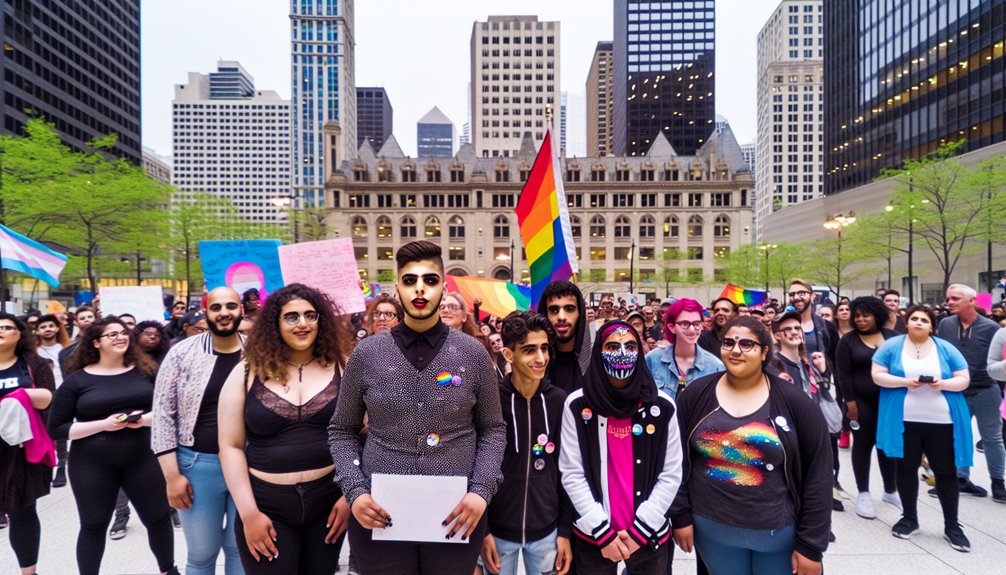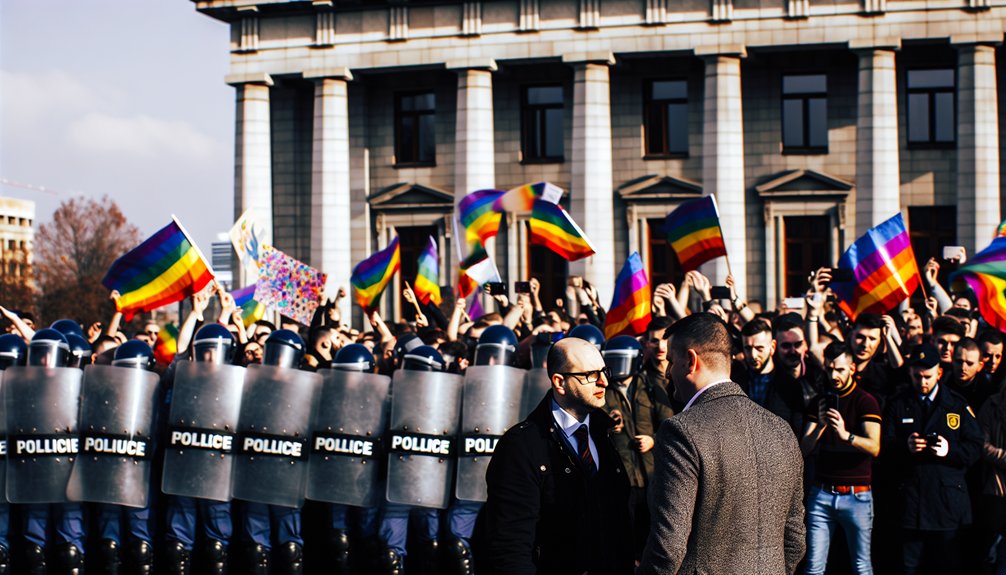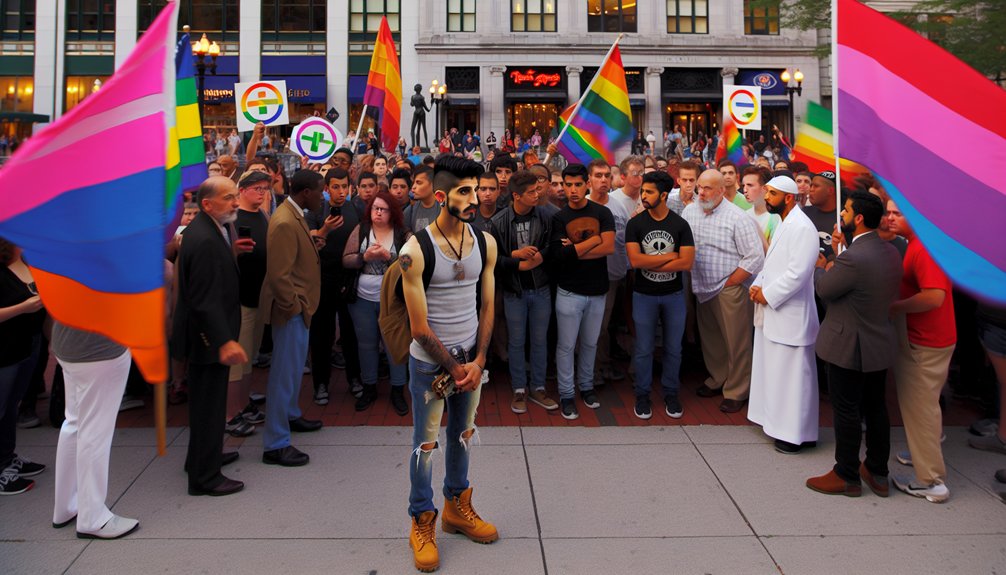Is There a Movement to Rid the Country of Transgender People?


Table of Contents
ToggleImagine the political landscape as a turbulent sea, with waves threatening to sweep away the rights of transgender people. You may wonder if there’s a deliberate effort to marginalize these communities. Recent laws and public statements seem to question the legitimacy of transgender identities, leaving many to feel like they’re fighting against the tide. What’s driving these actions, and how might they reshape society’s understanding of gender? The answers might surprise you.
When you think about legislative actions targeting transgender identities, it can feel like a storm is brewing in places like Texas. Imagine a world where simply being yourself could be considered a crime. That’s the scenario facing transgender individuals in Texas due to proposed transgender legislation. Representative Tom Oliverson’s bill could label identifying as transgender as identity fraud, turning personal identity into a legal issue. If this bill passes, someone could face hefty fines and even jail time just for being true to themselves. You may question how something as personal as gender identity could lead to such severe consequences. This legislation reflects deep tensions and raises significant questions about identity and rights in the current society.

Imagine a world where public figures openly dismiss the identities of others, and you’ll see how political disrespect plays out. When political rhetoric fails to offer identity recognition, it sends a message that some lives don’t matter. Think about the time when Texas Republican Keith Self called Delaware Democrat Sarah McBride “Mr. McBride.” This disrespect wasn’t just a slip-up; it was a deliberate choice.
| Incident | Impact |
|---|---|
| Keith Self misgendering Sarah McBride | Highlights refusal to acknowledge identity |
| Texas hearing on gender identity | Shows dismissal of transgender experiences |
| Public figures’ statements | Influence public perception of trans rights |
Such incidents aren’t isolated. They’re examples of how political attitudes can shape society’s view on identity and respect.

Although debates about gender identity often stir strong emotions, they also reveal diverse perspectives on morality and societal norms. You might see people like Jonathan who view gender identity through a biblical lens, believing that it challenges traditional values. Others, like Barbie, stress the importance of letting transgender individuals live freely without judgment. This conversation often boils down to these key points:
Gender identity debates reveal diverse moral perspectives and challenge traditional values.
These discussions highlight the complexity of balancing individual rights with collective moral perspectives.
Community responses to gender identity debates echo a wide range of emotions and concerns. Imagine your best friend, who identifies as transgender, facing constant scrutiny just for being themselves. It’s tough, right? Many people in the community show resilience by supporting each other through these challenges. They organize rallies, share stories of transgender experiences, and remind everyone that they’re not alone. You might hear about someone like Barbie Braxton, a passionate advocate, speaking out against unfair laws. She emphasizes the strength and courage it takes to live authentically. Even when faced with proposed legislation that could harm their freedom, communities unite, determined to protect their rights. They continue to fight for acceptance, proving their incredible resilience in the face of adversity.
When you look at the proposed legislation in Texas and the recent congressional hearing incident, it’s clear these events could shape the future of transgender rights across the nation. They highlight significant issues about gender equality and identity politics. Consider these broader implications:
These developments remind you that the fight for equality is ongoing and complex.
You can trace anti-transgender sentiment back to historical discrimination deeply rooted in cultural narratives. Think about how early American society clung to rigid gender roles, often marginalizing those who didn’t fit the mold. Laws and media historically portrayed transgender people negatively, reinforcing stereotypes. Even today, remnants of these ideas persist, influencing societal attitudes. To change this, it’s essential to challenge outdated narratives and adopt a more inclusive perspective.
When you compare global policies on transgender rights, you’ll notice stark differences. Some countries welcome inclusivity, offering legal recognition and healthcare support, while others resist change, clinging to outdated cultural attitudes. Picture yourself in Sweden, where rights are celebrated, versus a place where acceptance lags. These varied approaches reflect how societies value diversity and equality, showing you that attitudes can either bridge gaps or deepen divides across the world.
You’re curious about prominent transgender activists leading the charge. They’ve got some smart strategies up their sleeves, like coalition building. Imagine activists joining forces with allies from diverse communities. They create strong networks, host educational events, and use social media to spread their message. These leaders don’t just focus on protests; they also work behind the scenes, influencing policymakers. Their efforts aim to protect rights and promote acceptance, fostering a more inclusive society.
When it rains, it pours, especially for young people facing anti-transgender legislation. As you can observe, these laws can really mess with their mental health and youth identity. Imagine feeling like you’re not allowed to be yourself—it’s like being stuck in a maze with no exit. This kind of pressure can lead to anxiety, depression, and a constant sense of being on edge, making everyday life a real uphill battle.
When you watch TV or read articles, media bias can shape how you perceive transgender individuals. Sometimes, the representation effects can be misleading, painting unfair or one-sided pictures. For example, if the media often portrays transgender people negatively, you might develop biased views without realizing it. On the flip side, positive stories can open your mind and foster understanding. It’s essential to question what you observe and seek diverse perspectives.
Imagine a garden where each flower represents a unique identity. If some gardeners decide certain flowers don’t belong, they might pull them out, claiming they’re weeds. But by doing so, they rob the garden of its full beauty and diversity. In the same way, when laws and rhetoric target transgender individuals, it threatens to erase their vibrant contributions. Instead, let’s nurture every “flower” and guarantee all identities can thrive, enriching our shared community.
 News and AdvocacyNovember 14, 2025Rainbow Victories: 2025’s Most Pro-LGBTQ+ States Revealed
News and AdvocacyNovember 14, 2025Rainbow Victories: 2025’s Most Pro-LGBTQ+ States Revealed News and AdvocacyNovember 14, 2025Transgender Sanctuary States: Protecting Rights, Providing Hope
News and AdvocacyNovember 14, 2025Transgender Sanctuary States: Protecting Rights, Providing Hope Featured PostsNovember 13, 2025When Restroom Policing Backfires: The Hotel That Went Too Far
Featured PostsNovember 13, 2025When Restroom Policing Backfires: The Hotel That Went Too Far Featured PostsNovember 13, 2025Sex, Safety, and Seduction: A Trans Girl’s Guide to Hookups
Featured PostsNovember 13, 2025Sex, Safety, and Seduction: A Trans Girl’s Guide to Hookups